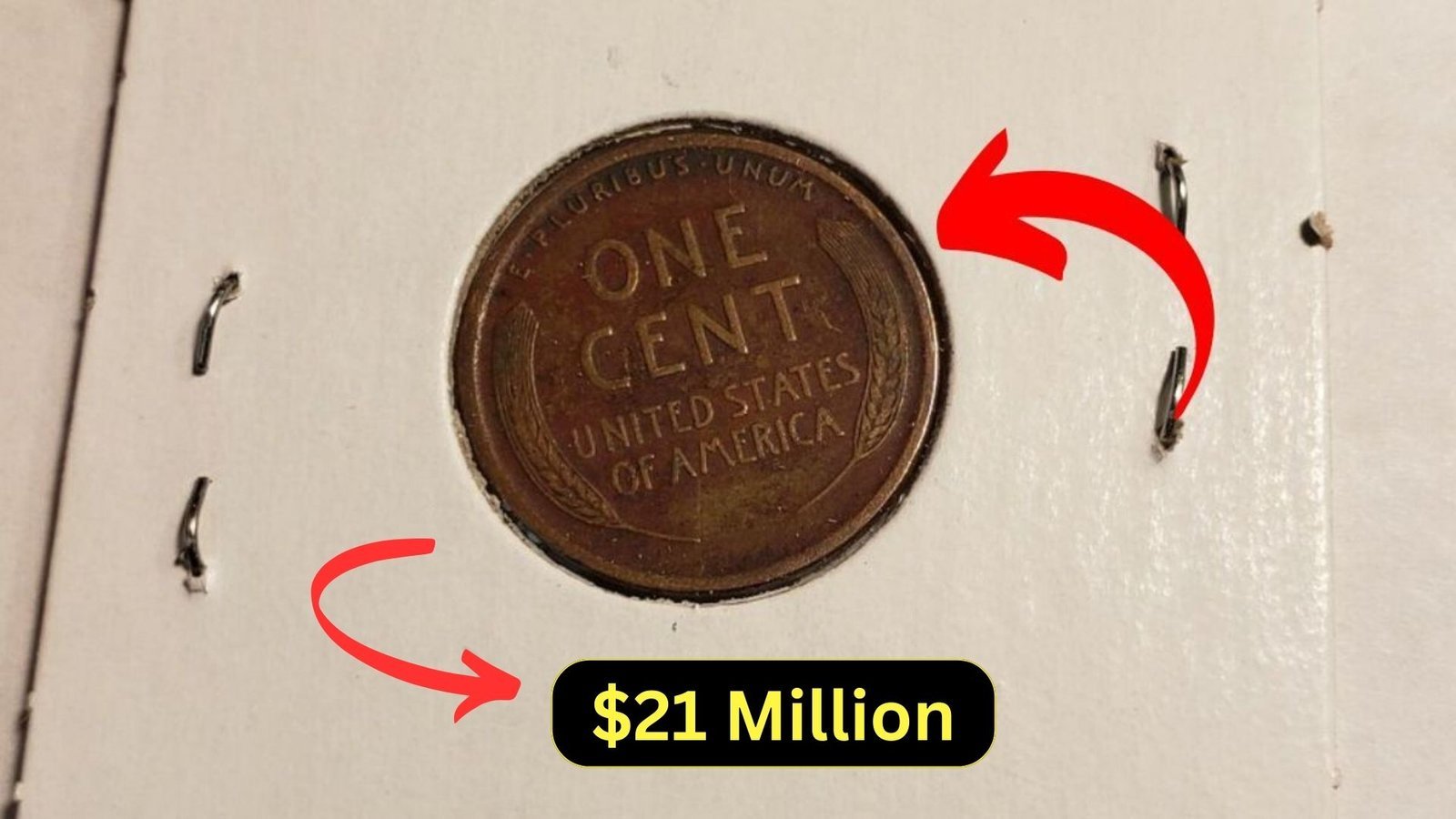Imagine this: you’re digging through a coffee can full of old coins or checking your loose change after a grocery run, and there it is — a simple brown penny. But this isn’t just any penny. Rumors swirl that one rare Lincoln Wheat Penny could be worth an unbelievable $21 million. Hard to believe, right? Yet, for coin collectors and history buffs, it’s a story that keeps them searching.
What’s So Special About the $21 Million Penny?
The Lincoln Wheat Penny, first minted in 1909, was a tribute to President Abraham Lincoln’s 100th birthday. Most of these coins, which were produced until 1958, are worth just a cent. But a few rare versions — thanks to minting mistakes, odd metal compositions, or tiny production runs — have become legends in the coin world. One of those legends is the so-called “mystery penny,” rumored to carry that jaw-dropping $21 million valuation because of its unmatched rarity and historical intrigue.
A Penny With a Story
When the Wheat Penny debuted, it was the first U.S. coin to feature an actual person. Its designer, Victor David Brenner, placed his initials “VDB” on the reverse, sparking both admiration and controversy. Over the decades, unusual errors crept into production — like the famous 1943 copper penny (struck during World War II when pennies were supposed to be made of steel). These quirks are exactly what makes certain Wheat Pennies worth small fortunes today.
Rare Wheat Pennies That Made Headlines
- 1909-S VDB – Rare low-mintage coin with designer’s initials. Value: $700–$2,500
- 1943 Copper – Minted on the wrong metal. Value: $100,000+
- 1944 Steel – Transitional error penny. Value: $75,000+
- “Mystery Penny” – The rumored $21 million coin collectors dream of finding.
Why the Sky-High Price Tag?
Collectors will pay almost anything for a mix of rarity, history, and condition. That’s why some of these pennies sell for more than luxury cars — even more than gold ounce for ounce. With so few of them in existence, demand pushes prices into the stratosphere.
Could You Have One?
Here’s the exciting part: anyone could stumble across one. Maybe it’s hiding in an old family coin jar or tucked away in a roll of pennies from the bank. That’s why knowing what to look for is key:
- Check the Mint Mark: An “S” or “D” below the date can signal scarcity.
- Metal Composition: Copper pennies from 1943 or steel pennies from 1944 are red flags (in a good way).
- Condition: Crisp details and minimal wear mean more money.
- VDB Initials: Found on the 1909 edition, they can significantly raise value.
Fun Facts That’ll Make You Rethink Pennies
- A 1943 copper penny once sold for $1.7 million at auction.
- Over 24 billion Wheat Pennies were minted — yet only a handful are truly valuable.
- Collectors call them “small treasures” because sometimes that’s exactly what they are.
Expert Tips If You Strike Gold (or Copper)
- Don’t clean it — polishing damages value.
- Get it authenticated — companies like PCGS or NGC can certify it.
- Go to auction — serious buyers pay far more than local dealers.
FAQs
Is there really a penny worth $21 million?
Reports suggest one ultra-rare coin has been valued at that amount. Even if you don’t find that one, other Wheat Pennies can still fetch thousands.
Can I still find one today?
Yes — though rare, Wheat Pennies still pop up in circulation, especially in old collections or rolls.
Which should I search for first?
Start with the 1909-S VDB, 1943 Copper, and 1944 Steel. These are the classics every collector hunts.
Final Thought
The idea of a penny worth $21 million captures the magic of coin collecting — the possibility that an everyday coin could hold life-changing value. So the next time you’re sorting through spare change, take a closer look. That little Wheat Penny in your hand might not just be pocket change — it could be history, mystery, and fortune all rolled into one.
